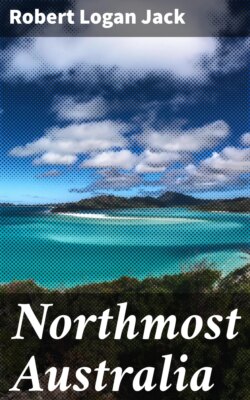Читать книгу Northmost Australia - Robert Logan Jack - Страница 38
На сайте Литреса книга снята с продажи.
THE VOYAGE OF THE "PANDORA," 1791
EDWARD EDWARDS
Оглавление"PANDORA" SENT TO APPREHEND "BOUNTY" MUTINEERS. ARRESTS FOURTEEN AT TAHITI. REACHES MURRAY ISLANDS. WRECKED AT PANDORA ENTRANCE WHILE SEARCHING FOR A PASSAGE THROUGH BARRIER REEF. MANY DROWNED. SURVIVORS TAKE TO BOATS. BOATS THREAD BARRIER REEF AND REACH QUEENSLAND COAST NEAR ORFORD NESS. NORTHWARD TO MOUNT ADOLPHUS ISLAND. SKIRMISH WITH NATIVES. WESTWARD. HORN ISLAND. WOLVES (DINGOES). HUNGER AND THIRST. THROUGH FLINDERS PASSAGE (BETWEEN HORN AND WEDNESDAY ISLANDS) AND PRINCE OF WALES CHANNEL. GOOD ISLAND. TIMOR. PASSENGERS TO SPITHEAD. TRIAL AND PUNISHMENT OF MUTINEERS.
The "Pandora" a frigate carrying 160 men and 24 guns, was commanded by CAPTAIN (afterwards Admiral) EDWARD EDWARDS. Her commission was to capture and bring to punishment the mutineers who had seized the "Bounty" one of His Majesty's ships of war, and turned her Captain and his adherents adrift in an unvictualled open boat.
The fullest record of this voyage is the narrative of the Surgeon, George Hamilton. [1] Next in importance as regards detail, though probably more reliable as to the navigation, are the Commander's Reports to the Admiralty, especially one dealing with the wreck on the Barrier Reef and the subsequent passage of the survivors, in four boats, through Torres Strait. [2] Then a Chart of the Voyage, up to the date of the wreck, was constructed by Lieutenant Hayward, and was published in 1798 by Alexander Dalrymple. From the above materials, Flinders compiled a short account of the voyage for his introductory chapter of Terra Australis (I, XVI). On his own chart, he copied the route, as far as the wreck, from Dalrymple; but he frankly admitted that, as regards the boat voyage, the imperfection of the narrative had baffled his editorial capacity. No serious attempt to identify the route followed by the boats appears to have been made up to 1915, when Basil Thomson, [3] formerly of the Colonial Service and
[1) A Voyage Round the World in H.M. Frigate "Pandora," by George Hamilton, Surgeon, R.N. Berwick and London, 1793.]
[2) Report dated Batavia, 25th November, 1791; endorsed "29th May, 1792, from Amsterdam."
[3) Voyage of H.M.S. ">Pandora," dispatched to arrest the Mutineers of the "Bounty"; being the Narratives of Captain Edward Edwards, R.N., the Commander, and George Hamilton, the Surgeon. London, Francis Edwards, 1915.]
Acting Prime Minister of Tonga, reprinted and edited the narratives of the Commander and Surgeon.
The "Pandora" left Portsmouth in August, 1790, and reached TAHITI on 23rd March, 1791. Here sixteen of the MUTINEERS had settled down, but two had already been killed by the natives. The fourteen remaining were arrested and confined on board the "Pandora" The frigate left Tahiti on 8th May, and after having made some search (without having any clue) for the "Bounty" continued her voyage, via Palmerston Island, Atafu, Samoa, the Friendly Islands and Tongatabu, Wallis Island, the Santa Cruz Islands and Indispensable Reefs, to the Great Barrier Reef. (SEE MAP A.) The latter was met with on 26th August? in about 10° S. lat. Steering westward, the MURRAY ISLANDS were seen and named. The islands were found to be fringed by a reef, which forced the ship to take a southerly course, interrupted by many attempts to find a westerly passage. The last of these attempts was made on 29th August late in the afternoon, when the ship grounded on the reef in about 11° 24' S. lat. The spot is now charted as PANDORA ENTRANCE. The "Pandora" was hammered on the reef during the whole of the night, but at daylight next morning (30th August) slipped over into deep water and SANK. Thirty-one of the ship's company and four of the mutineers were drowned. Ninety-nine men answered the rollcall and found temporary refuge on a sandbank about four miles from the wreck. Very little could be saved and the party were almost destitute of provisions. It may be assumed, however, that the Captain saved his sextant and charts and that each of the boats carried a compass. A reference by Hamilton to the boat's position "at meridian" makes it probable that Lieutenant Larkin, on the "red yawl," had a sextant.
From this point it is necessary to compare the reports of the Commander and Surgeon, remembering always that the two witnesses were in different boats, which parted company for a time.
